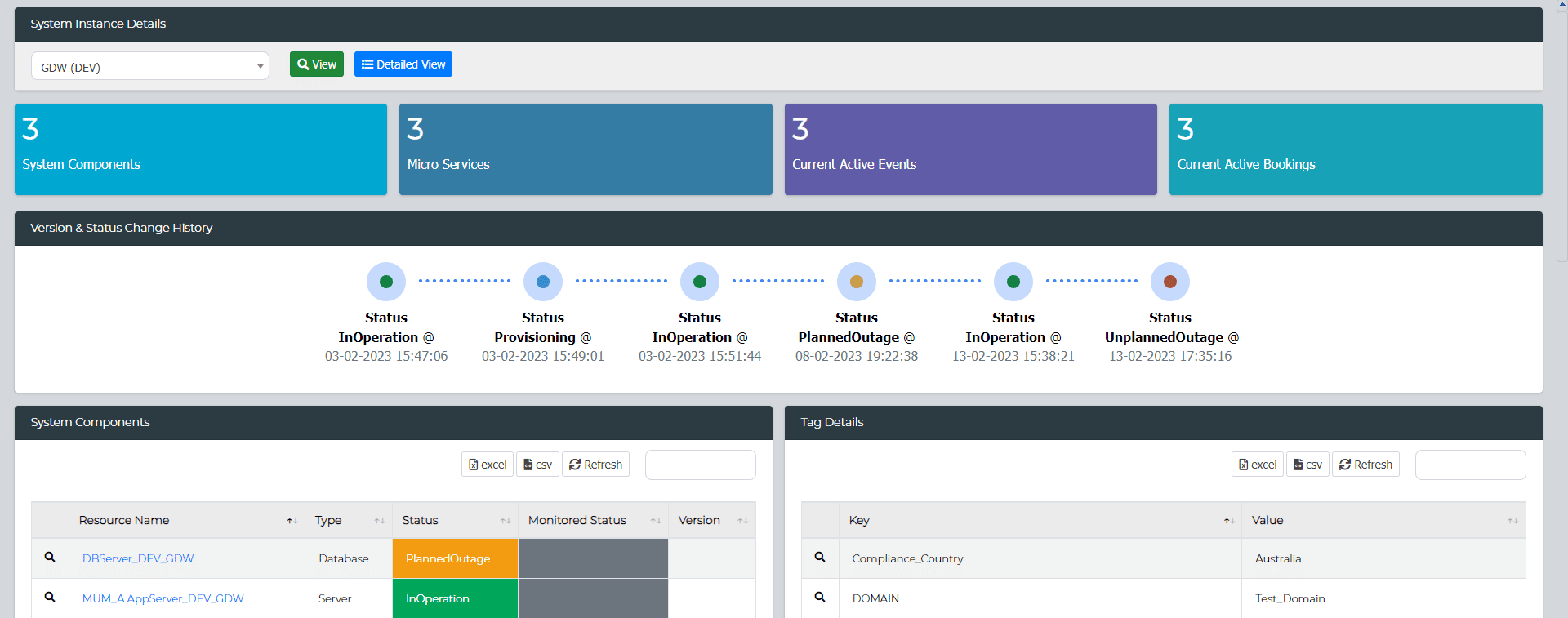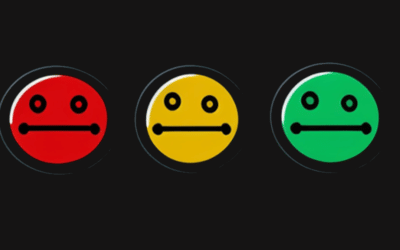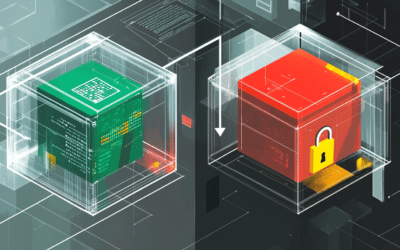
Observability – A foundation for Site Reliability Engineering
FEB, 2023
by Andrew Walker.
Author Andrew Walker
Andrew Walker is a software architect with 10+ years of experience. Andrew is passionate about his craft, and he loves using his skills to design enterprise solutions for Enov8, in the areas of IT Environments, Release & Data Management.
Site Reliability Engineering (SRE) is a methodology for building and maintaining large-scale, highly available software systems. It involves applying software engineering practices to operations in order to increase reliability, reduce downtime, and improve the overall user experience. Observability is one of the key pillars of SRE and refers to the ability to understand how a system behaves by analyzing its internal state and external outputs.
Enov8 IT & Test Environment Manager
*Innovate with Enov8
Streamlining delivery through effective transparency & control of your IT & Test Environments.
In this post, we will explore observability as a foundation for SRE and discuss its importance in achieving the goals of SRE. We will also outline some best practices for implementing observability and highlight some potential challenges. By the end of this post, you will have a better understanding of why observability is a critical aspect of SRE and how it can be leveraged to build more reliable, efficient systems.
SRE & Test Environment Mangagement
Test Environment Management (TEM) and Site Reliability Engineering (SRE) are closely related disciplines because they both require a deep understanding of complex software systems and a data-driven approach to problem-solving. TEM involves managing the testing environments used by developers and testers to ensure that they are stable, consistent, and representative of the production environment. Similarly, SRE involves managing the production environment to ensure that it is reliable, efficient, and scalable. Both disciplines require a strong focus on observability and a commitment to continuous improvement, as well as collaboration between teams to achieve shared goals. By working together, TEM and SRE can help ensure that software systems are thoroughly tested, reliable, and efficient from development through production, delivering value to users and stakeholders.
What is observability?
Observability is the ability to understand how a system behaves by analyzing its internal state and external outputs. It differs from monitoring, which simply involves collecting data and reporting on predefined metrics. Observability is more proactive and involves analyzing the data to gain insights into the system’s behavior and performance.
The three main components of observability are logs, metrics, and traces. Logs are a chronological record of events that occur within a system and can be used to diagnose errors or investigate system behavior. Metrics are numerical measurements that can be used to track performance and identify anomalies. Traces are a detailed record of the interactions between components of a system and can be used to identify the root cause of a problem.
Each component of observability contributes to a holistic understanding of the system’s behavior, and all three are necessary for a highly observable system. For example, logs can provide detailed information on what happened during an incident, metrics can show how the system is performing over time, and traces can help identify which components of the system are causing issues.
By having a highly observable system, teams can detect and resolve issues faster, improve system performance, and ultimately provide a better user experience. In the next section, we will discuss the benefits of observability in more detail.
Enov8 Environment Manager, Observability: Screenshot
Benefits of observability
Observability provides several benefits to teams practicing SRE. Here are some of the key benefits:
- Faster detection and resolution of issues: With observability, teams can quickly identify and diagnose issues, reducing the time it takes to resolve them. This can lead to less downtime and a better user experience.
- Improved system performance: By monitoring metrics and analyzing logs, teams can identify areas of the system that are performing poorly and make adjustments to improve overall performance.
- Enhanced customer experience: By having a more reliable and performant system, customers will have a better experience when using the product. This can lead to increased user satisfaction and retention.
- Improved collaboration and communication among teams: Observability can help break down silos between teams by providing a common language and understanding of how the system works. This can lead to better collaboration and communication when troubleshooting issues.
Overall, observability is critical to achieving the goals of SRE. It provides teams with a deep understanding of how the system behaves and performs, which enables them to make data-driven decisions to improve reliability and performance. In the next section, we will discuss some best practices for implementing observability in SRE.
Best practices for implementing observability in SRE
Implementing observability in SRE requires careful planning and execution. Here are some best practices to consider:
- Establish clear objectives: Define what you want to achieve with observability and ensure that all stakeholders are aligned on the goals. This will help guide the implementation and ensure that everyone is working towards a common goal.
- Involve all stakeholders in the process: Observability is a team effort, and it’s important to involve all stakeholders in the implementation process. This includes developers, operations teams, and product owners. By involving everyone in the process, you can ensure that the implementation meets everyone’s needs and is sustainable in the long run.
- Use standard formats and tools: Using standard formats and tools can help ensure that data is consistent and easily understood by everyone on the team. This can include standard logging formats, metrics formats, and tracing formats.
- Create a culture of observability: Observability should be an ongoing process that is integrated into the team’s workflow. By creating a culture of observability, you can ensure that everyone is thinking about observability when designing, building, and maintaining systems.
- Continuously monitor and refine the observability strategy: Observability is not a set-and-forget process. Teams should continuously monitor and refine their observability strategy to ensure that it remains effective and relevant over time.
By following these best practices, teams can implement observability in a way that supports the goals of SRE and helps build more reliable, efficient systems. However, there are also some potential challenges to be aware of when implementing observability, which we will discuss in the next section.
Challenges of implementing observability in SRE
While observability provides significant benefits to teams practicing SRE, there are also some challenges to be aware of when implementing it. Here are some of the key challenges:
- Data overload: With observability comes a lot of data. Teams need to be able to manage and analyze this data effectively to gain insights into the system’s behavior. This can be challenging, particularly in large-scale systems.
- Cost: Observability can be expensive to implement, particularly if you need to invest in new tools or infrastructure to support it. Teams need to consider the cost of observability and ensure that it provides sufficient value to justify the investment.
- Complexity: Implementing observability can be complex, particularly in large-scale systems with many components. Teams need to carefully design their observability strategy to ensure that it is effective and sustainable over time.
- Security and privacy: Observability requires access to sensitive data, which can create security and privacy concerns. Teams need to ensure that they have appropriate measures in place to protect sensitive data and comply with relevant regulations.
By being aware of these challenges, teams can take steps to mitigate them and ensure that their observability implementation is successful. In conclusion, observability is a critical aspect of SRE and provides significant benefits to teams building and maintaining large-scale software systems. By following best practices and being aware of potential challenges, teams can implement observability in a way that supports their goals and helps build more reliable, efficient systems.
Conclusion
Observability is a foundational concept in Site Reliability Engineering (SRE) and is critical to building reliable, efficient software systems. By providing teams with a deep understanding of how the system behaves and performs, observability enables them to make data-driven decisions to improve reliability and performance.
In this post, we discussed the key concepts of observability and how it supports the goals of SRE. We also covered some best practices for implementing observability in SRE, such as establishing clear objectives, involving all stakeholders, using standard formats and tools, creating a culture of observability, and continuously monitoring and refining the observability strategy. Finally, we discussed some potential challenges to be aware of when implementing observability, such as data overload, cost, complexity, and security and privacy concerns.
Observability is not a one-time implementation, but rather an ongoing process that requires continuous monitoring and refinement. By adopting a culture of observability and following best practices, teams can build more reliable, efficient systems that meet the needs of their users and stakeholders.
Overall, observability is a key pillar of SRE, and teams that prioritize it will be better equipped to build and maintain high-quality software systems that provide value to their users and stakeholders.
Other SRE Reading
Interested in reading more about SRE. Why not start here:
Enov8 Blog: Methods to Improve Observability across DevOps and the Lifecycle
Enov8 Blog: The History of SRE
Enov8 Blog: SRE top 10 Best Practices
Enov8 Blog: DevOps versus SRE – Friends or Foe?
Relevant Articles
RAG Status: What It Is and Using It for Project Management
Effective Leadership requires effective tooling to drive successful outcomes. One tool they can use to monitor and measure progress is RAG status. RAG stands for Red, Amber, Green, and is a simple traffic light system used to communicate the current status of a...
Enterprise Architecture Tools: 11 to Be Aware Of in 2025
Enterprise architecture (EA) is an essential discipline for organizations aiming to align their IT strategy with business goals. As companies become more complex and technology-driven, having the right set of EA tools is crucial to streamline operations, improve...
What is a Staging Server? An Essential Guide
Release issues happen. Maybe it’s a new regression you didn’t catch in QA. Sometimes it’s a failed deploy. Or, it might even be an unexpected hardware conflict. How do you catch them in advance? One popular strategy is a staging server....
What is Deployment Planning? A Detailed Guide
Deployment planning, sometimes referred to as "implementation planning," is the process of creating a plan for the successful deployment of a new software or system. It involves identifying the resources, tasks, and timeline needed to ensure that the deployment is...
The Definitive Guide to Test Data Generation
Test data generation is a critical part of the software testing lifecycle, ensuring that applications are tested against realistic scenarios before going live. If you’re not testing against production-like data, you’re arguably not truly testing your application. In...
What is a Test Data Manager? A Detailed Introduction
Testing is a critical aspect of software development, and it requires the use of appropriate test data to ensure that the software performs optimally. Test data management (TDM) is the process of creating, storing, and managing test data to ensure its...












